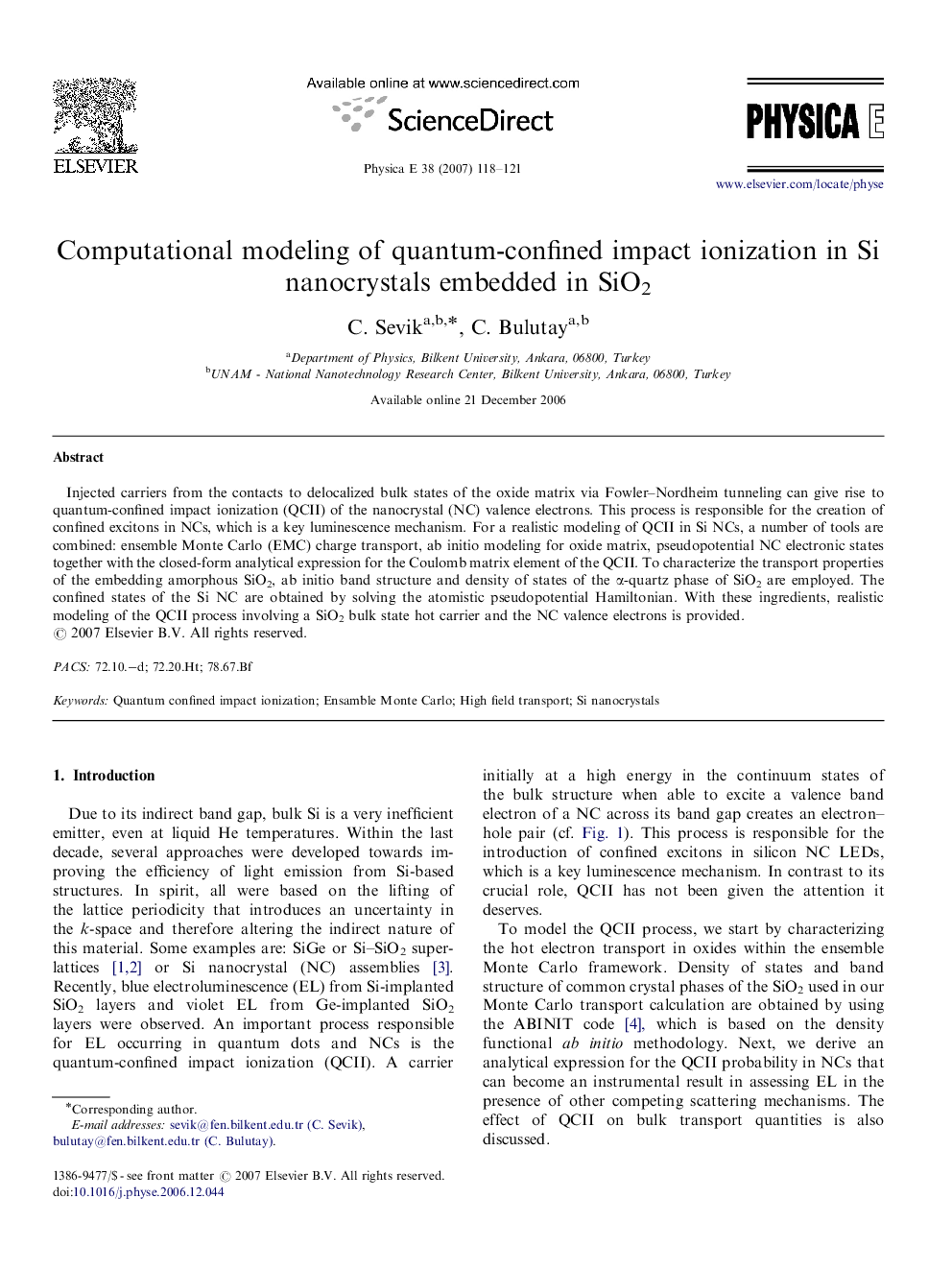| Article ID | Journal | Published Year | Pages | File Type |
|---|---|---|---|---|
| 1547685 | Physica E: Low-dimensional Systems and Nanostructures | 2007 | 4 Pages |
Abstract
Injected carriers from the contacts to delocalized bulk states of the oxide matrix via Fowler-Nordheim tunneling can give rise to quantum-confined impact ionization (QCII) of the nanocrystal (NC) valence electrons. This process is responsible for the creation of confined excitons in NCs, which is a key luminescence mechanism. For a realistic modeling of QCII in Si NCs, a number of tools are combined: ensemble Monte Carlo (EMC) charge transport, ab initio modeling for oxide matrix, pseudopotential NC electronic states together with the closed-form analytical expression for the Coulomb matrix element of the QCII. To characterize the transport properties of the embedding amorphous SiO2, ab initio band structure and density of states of the α-quartz phase of SiO2 are employed. The confined states of the Si NC are obtained by solving the atomistic pseudopotential Hamiltonian. With these ingredients, realistic modeling of the QCII process involving a SiO2 bulk state hot carrier and the NC valence electrons is provided.
Related Topics
Physical Sciences and Engineering
Materials Science
Electronic, Optical and Magnetic Materials
Authors
C. Sevik, C. Bulutay,
